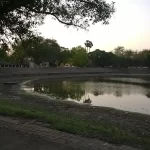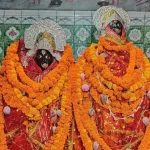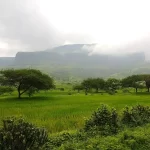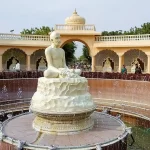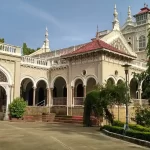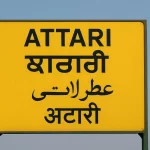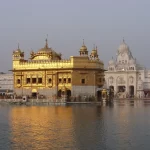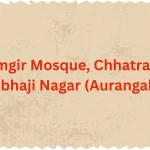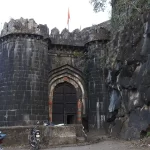“Arrah, Bihar: Where History Whispers and Culture Thrives”
➤ Introduction
Nestled at the confluence of the Ganges and Son rivers, Arrah (officially Ara) is a historical and cultural powerhouse in Bihar’s Bhojpur district. Known for its ancient roots, architectural marvels, and vibrant Bhojpuri culture, this city offers a unique blend of myth, history, and modernity. Below, we delve into its multifaceted identity, providing granular details to enrich your understanding of this hidden gem.
➤ Detailed History & Architecture
➨ Ancient Roots
Arrah’s history dates to 684 BCE, when it was part of Magadha’s Haryanka dynasty. The Masarh Lion (a Mauryan-era artefact) and Ashoka Pillars found here highlight its Buddhist and Jain heritage. According to the Ramayana, Lord Rama trained under sage Vishwamitra in Arrah’s forests, while the Mahabharata references it as Ekchakra, where Bhima slayed the demon Bakasura.
➨ Medieval Struggles
In the 14th century, Arrah became a battleground between the Chero dynasty and Ujjainiya Rajputs. Mughal emperor Babur renamed it Shahabad (City of Kings) in 1529, and Sher Shah Suri later fortified the region.
➨ Colonial Resistance
Arrah gained fame during the 1857 Rebellion, where octogenarian revolutionary Veer Kunwar Singh besieged British forces at the Little House of Arrah for eight days. The Holy Saviour Church (built in 1911) stands as a relic of British influence, visited by King George V.
➨ Architectural Highlights
❉ Aranya Devi Temple: Perched on rocky boulders, this 2,000-year-old shrine honours the “Goddess of Forests”.
❉ Koilwar Bridge: A 1.44-km rail-road marvel built in 1862 over the Son River.
❉ Veer Kunwar Singh Setu: The world’s longest multi-span extra-dosed bridge (1,920 meters).
❉ 44 Jain Temples: Including the 12th-century Parashvanath Temple in Masarh.
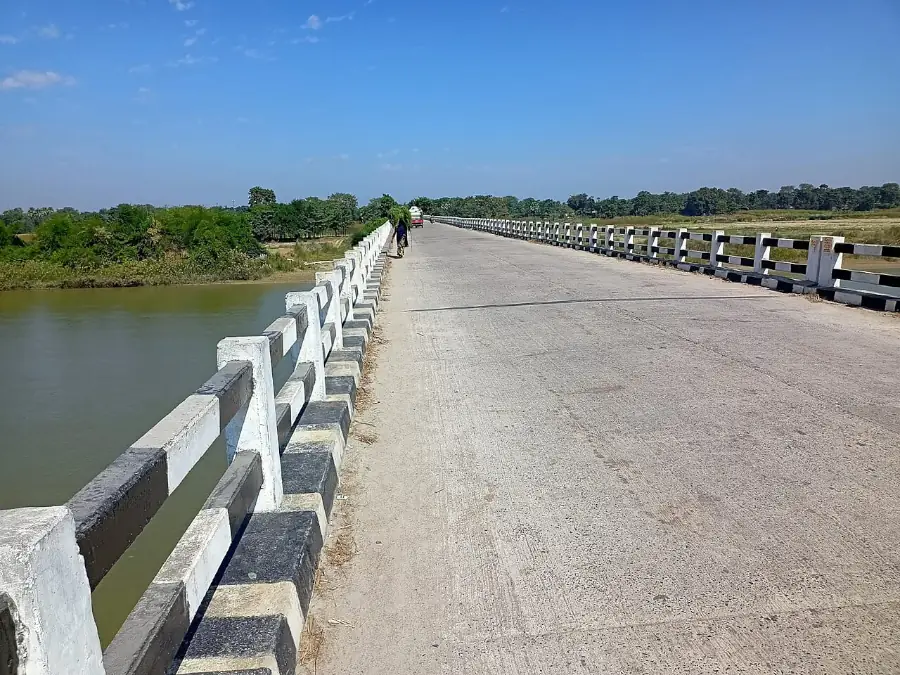
Arrah, Bihar: History, Culture, and Travel Guide
➤ Detailed Section Breakdown:
1. Historical Significance
Arrah’s history stretches back to the Vedic period, with mentions in Hindu epics like the Ramayana and Mahabharata. Legend states Lord Rama trained here under sage Vishwamitra, and Bhima slayed the demon Bakasura in the region. Archaeological finds, such as the Masarh Lion (a Mauryan-era artifact) and Ashoka pillars, highlight its role in ancient Magadha and Gupta empires. During the 1857 Rebellion, Arrah became a symbol of resistance under Veer Kunwar Singh, whose siege of the British “Little House” remains legendary.
2. Etymology and Mythological Roots
The name “Arrah” derives from the Sanskrit Aranya (forest), reflecting its once-dense woodlands. A Jain inscription in Masarh village refers to it as Aramnagar, later evolving into Arrah. Babur renamed it Shahabad (City of Kings) in 1529, a title retained until the district was restructured in 1972.
3. Geographical and Climatic Profile
Located at 25°33′N 84°39′E, Arrah sits 192 meters above sea level, flanked by the Ganges and Son rivers. Its humid subtropical climate (Köppen: Cwa) features hot summers (up to 38°C), mild winters (11°C), and heavy monsoon rains (July–September), crucial for its fertile alluvial soil.
4. Cultural Tapestry
Arrah’s soul lies in its Bhojpuri Traditions, celebrated through festivals like Chhath Puja and Holi. The local cuisine — Litti-Chokha, Khurma (sweet cheese), and Sattu drinks—reflects agrarian roots. The city also hosts 44 Jain temples, including the 12th-century Parashvanath Temple in Masarh, showcasing its spiritual diversity.
Also Read
Aranya Devi Temple – Arrah, Bihar- Where Mythology Meets Modern Devotion
5. Economic Backbone
The economy thrives on sand mining from the Son River, brick production, and agriculture (rice, mango, mahua). Recent sand mining has generated ₹2,800 crores in revenue, fuelling local development.
6. Administrative Structure
As Bhojpur’s headquarters, Arrah is divided into 8 blocks (e.g., Arrah, Koilwar, Sahar) and 45 municipal wards. The district comprises three sub-divisions (tehsils): Ara Sadar, Jagdishpur, and Piro.
7. Demographics
The 2011 census recorded a population of 261,430, with 83.26% Hindus and 15.79% Muslims. Bhojpuri (77.16%) dominates linguistically, followed by Hindi and Urdu. Projections estimate a 2025 population of 380,000.
8. Modern Infrastructure
Arrah connects via NH-922 and the Veer Kunwar Singh Setu (world’s longest multi-span extra-dosed bridge). The upcoming Bihta Airport (30 km) and Patna Airport (50 km) enhance accessibility.
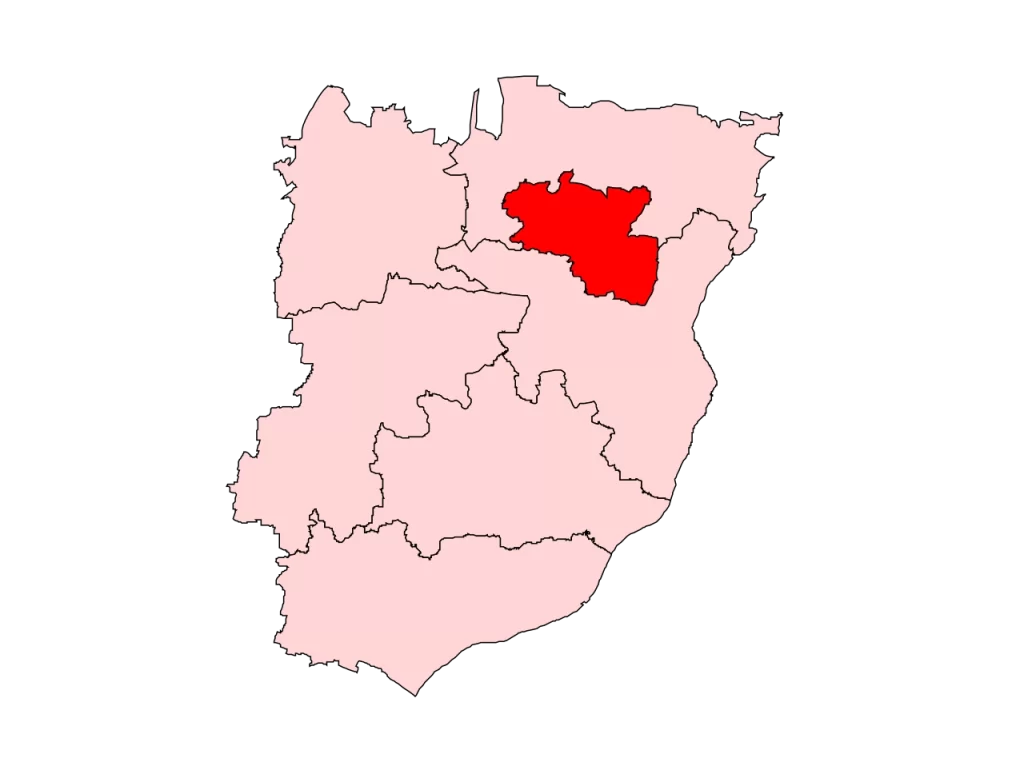
Arrah, Bihar: A Timeless Blend of History, Culture, and Spirituality
“Ready to step into history? Pack your bags and let Arrah’s timeless charm captivate you!”
➤ Expanded Sections with Granular Details
➨ Travel Tips & Climatic Conditions
❉ Best Time to Visit: October–March (15–25°C) for pleasant weather.
❉ Monsoon Itinerary: July–September offers lush landscapes but expect heavy rainfall (290–330 mm monthly).
❉ Clothing: Light cotton for summers; light woollens for winters.
❉ Health Tips: Carry mosquito repellent during monsoons.
❉ Local Transport: Auto-rickshaws and cycle-rickshaws dominate; rent private cars for long trips.
❉ Safety: Avoid isolated areas after dark; stick to well-lit markets.
➨ Talukas (Sub-Divisions) of Bhojpur District
❉ Ara Sadar
❉ Jagdishpur
❉ Piro
➨ Demographics
❉ Population: 261,430 (2011), projected to reach 380,000 by 2025.
❉ Literacy Rate: 81.15% (higher than Bihar’s 61.8%).
❉ Sex Ratio: 883 females per 1,000 males.
❉ Religions: Hindu (83.26%), Muslim (15.79%).
➨ Languages
❉ Bhojpuri (77.16%)
❉ Hindi (12.51%)
❉ Urdu (9.96%)
➨ Economy
❉ Sand Mining: Primary revenue source (₹2,800 crores recently).
❉ Agriculture: Rice, wheat, mangoes, and mahua.
❉ Brick Production: Utilizes Ganges alluvial deposits.
➨ Notable People from Arrah
❉ Veer Kunwar Singh: 1857 Rebellion leader.
❉ Jagjivan Ram: India’s 4th Deputy Prime Minister.
❉ Meira Kumar: First female Lok Sabha Speaker.
❉ Amitava Kumar: Acclaimed writer and professor.
❉ Bhuvaneshwar Prasad Sinha: 6th Chief Justice of India.
➨ Detailed Travel Guide
✦ How to Reach
❉ By Air: Patna Airport (50 km) or Bihta Airport (30 km).
❉ By Rail: Ara Junction (ARA) connects to Delhi, Kolkata, and Patna.
❉ By Road: NH-922 (Patna-Arrah-Buxar) and SH-12 (Arrah-Sasaram).
➨ Distance from Major Indian Cities
| City | Approx. Distance (km) | Travel Time (Approx.) |
| Patna | 58 km | 1.5 hours by road |
| Varanasi | 150 km | 3.5 hours by road |
| Kolkata | 600 km | 12 hours by train |
| Delhi | 1,000 km | 18 hours by train |
➨ Best Places to Visit
❉ Aranya Devi Temple: Ancient shrine atop stone boulders.
❉ Jagdishpur Fort: Veer Kunwar Singh’s rebellion base.
❉ Koilwar Bridge: 1862 rail-road marvel over the Son River.
❉ Holy Saviour Church: Built in 1911 during King George V’s visit.
❉ Masarh Village: Ashokan pillars and Jain relics.
❉ Ramna Maidan: 60-acre park for cultural events.
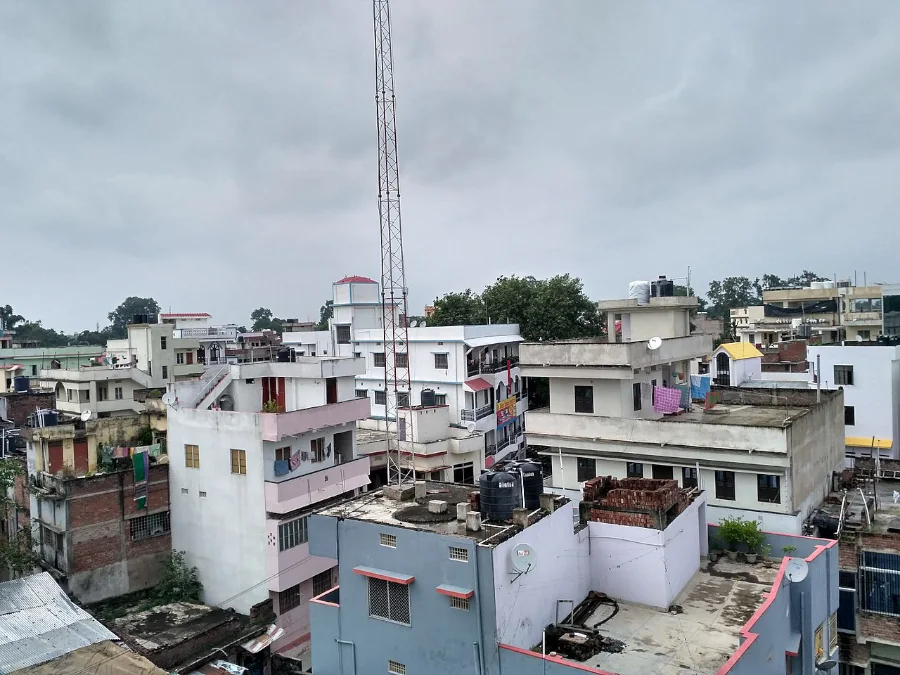
➨ Nearby Tourist Attractions
❉ Patna (58 km): Bihar Museum, Golghar.
❉ Sasaram (80 km): Tomb of Sher Shah Suri.
❉ Buxar (70 km): Historic battle site.
➨ Best Time to Visit
❉ October–March: Pleasant weather (15–25°C), ideal for sightseeing.
❉ Monsoon (July–September): Lush greenery but heavy rainfall.
➨ Local Markets
❉ Station Bazaar: Textiles and handicrafts.
❉ Ramna Road: Street food and traditional sweets.
➨ Local Food
❉ Litti-Chokha: Smoky wheat balls with spiced mash.
❉ Khurma: Deep-fried sweet cheese.
❉ Dal Pittha: Lentil-stuffed dumplings.
➨ Handicrafts
❉ Pottery: Clay utensils from Sinha village.
❉ Bamboo Crafts: Baskets and décor items.
➨ Monsoon Itinerary
❉ Day 1: Explore Jain temples and Aranya Devi.
❉ Day 2: Boat ride on the Son River.
❉ Day 3: Attend a Chhath Puja ritual.
➨ Local Lifestyle
Agrarian-centric with festivals like Chhath Puja and Teej. Evenings feature folk songs like “Tu Lagawelu Lipistic” celebrating Bhojpuri pride.
➤ FAQs
What is Arrah famous for?
Ancient temples, Veer Kunwar Singh’s rebellion, and Bhojpuri culture.
Are there hotels near Arrah Junction?
Yes, budget options like Hotel Bhojpuria and mid-range Aryaas Resort.
➤ Conclusion
Arrah is a tapestry of history, spirituality, and resilience. From its ancient temples to colonial-era bridges, the city invites travelers to explore its layered past and vibrant present. Whether you’re tracing Veer Kunwar Singh’s legacy or savouring Bhojpuri cuisine, Arrah promises an unforgettable journey.
➤ Sources
→ List of People from Arrah – Wikipedia
→ Arrah Municipal Corporation Census Data
→ Incredible India – Arrah Tourism
→ Bhojpur District – Wikipedia
➤ Image Credit
→ Wikimedia Commons – Arrah City
→ Wikimedia Commons – Collect-orate Pond, Ara on a May evening
→ Wikimedia Commons – A bridge on river Koilwar, Patna-Arrah road
→ Wikimedia Commons – Arrah constituency
For more information, you can visit our website: ExploreXP
“Unearth Arrah’s timeless stories—plan your trip today and walk through centuries of history!”
This structure balances SEO needs with engaging storytelling, ensuring readability while embedding keywords naturally. Let me know if you’d like me to expand any section!

